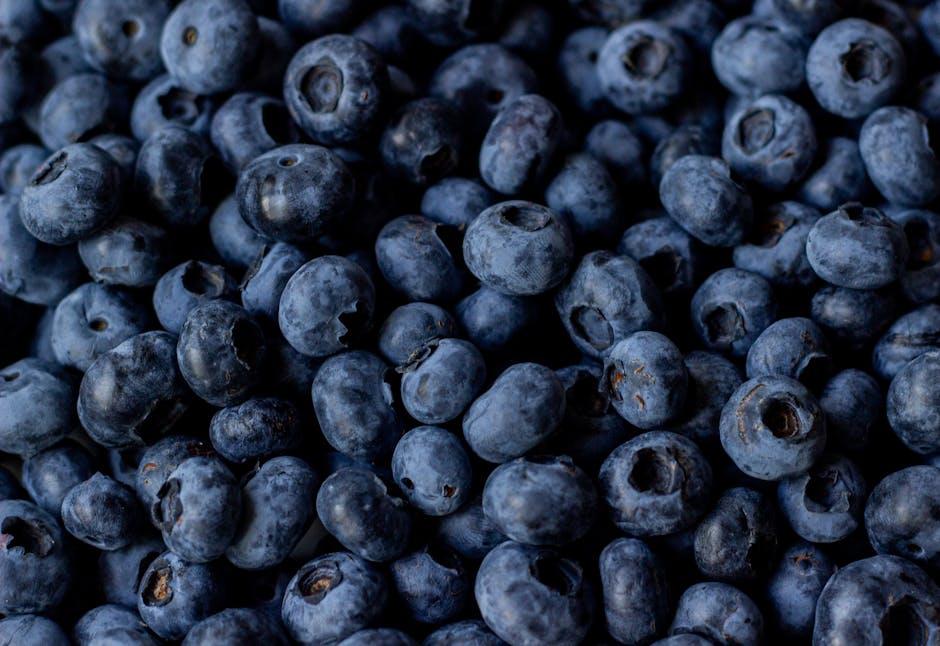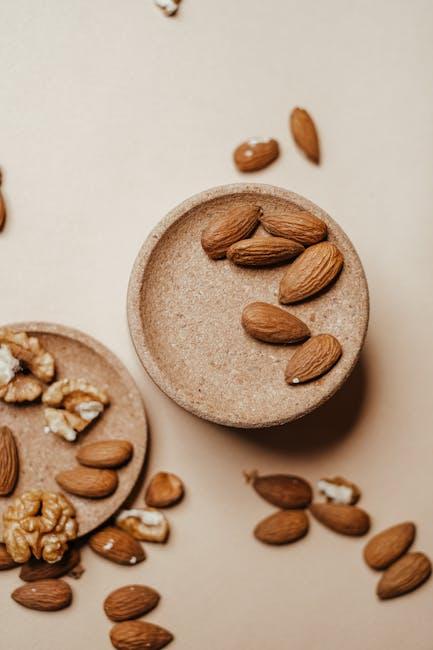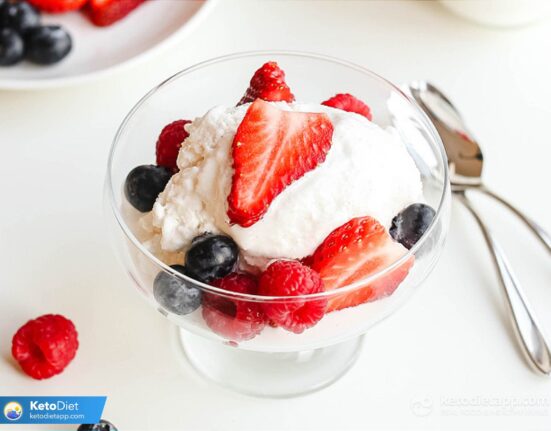In a world where dietary choices are as diverse as the colors on a palette, the vegan keto meal plan emerges as a fascinating blend of two distinct nutrition philosophies. Marrying the high-fat, low-carb principles of the ketogenic diet with the compassionate, plant-based ethos of veganism, this meal plan challenges conventional eating patterns and invites curious food lovers to explore a unique culinary frontier. Whether driven by health goals, ethical considerations, or a desire to experiment, embracing a vegan keto lifestyle promises not only to reshape the palate but also to redefine what it means to eat consciously in today’s evolving food landscape.
Table of Contents
- Crafting Balanced Macronutrients for Optimal Keto Performance
- Plant-Based Protein Sources to Power Your Vegan Keto Journey
- Navigating Hidden Carbs in Vegan Ingredients and How to Avoid Them
- Meal Prep Strategies to Simplify Your Weekly Vegan Keto Menu
- Delicious and Nutrient-Dense Recipes to Keep Your Keto Diet Exciting
- Q&A
- The Way Forward

Crafting Balanced Macronutrients for Optimal Keto Performance
Achieving an ideal distribution of macronutrients on a vegan keto diet requires a strategic approach to ensure the body remains in ketosis while receiving adequate nourishment. Fats should make up the majority of your intake, around 70-75% of your daily calories, focusing on plant-based sources like avocados, coconut oil, nuts, and seeds. Protein intake, essential for muscle repair and enzyme function, should be moderate — approximately 15-20% — and can be sourced from tofu, tempeh, seitan, and low-carb vegan protein powders. Carbohydrates should be kept low, near 5-10%, emphasizing fibrous, non-starchy vegetables to support digestion and provide essential micronutrients without kicking you out of ketosis.
Balancing these macronutrients can seem complex, but using a simple framework can clarify the process. Here’s a practical guide to structuring your meals:
- Fat: Olive oil, coconut cream, nut butters, olives
- Protein: Edamame, hemp seeds, vegan protein powders
- Carbohydrates: Spinach, kale, zucchini, cauliflower
| Macronutrient | Percentage of Calories | Key Vegan Sources |
|---|---|---|
| Fat | 70-75% | Avocados, Coconut Oil, Nuts, Seeds |
| Protein | 15-20% | Tofu, Tempeh, Vegan Protein Powder |
| Carbs | 5-10% | Leafy Greens, Zucchini, Cauliflower |

Plant-Based Protein Sources to Power Your Vegan Keto Journey
Fueling a vegan keto lifestyle requires thoughtful protein choices that align with both plant-based and low-carb principles. Incorporate nutrient-dense powerhouses like tofu, tempeh, and seitan, which provide ample protein without tipping the carb scale. Nuts and seeds such as hemp seeds, chia seeds, and almonds not only boost protein intake but also contribute healthy fats essential for ketosis. Don’t overlook smaller legumes like edamame and green peas in controlled portions, which offer fiber and micronutrients while keeping net carbs in check.
Balancing macronutrients is key, and these options shine in versatility. Here’s a quick glance at their protein content and net carbs per 100g:
| Protein Source | Protein (g) | Net Carbs (g) |
|---|---|---|
| Tofu | 19 | 1.9 |
| Tempeh | 20 | 7.6 |
| Seitan | 21 | 3.9 |
| Hemp Seeds | 31 | 1.3 |
| Chia Seeds | 17 | 2 |
| Almonds | 21 | 9 |
Leveraging these sources creatively enables meals rich in texture and flavor, from crispy tofu stir-fries to creamy chia pudding or crunchy almond crusts—each keeping your macros perfectly tuned for sustained energy and nutrient density.

Navigating Hidden Carbs in Vegan Ingredients and How to Avoid Them
When following a vegan keto lifestyle, the challenge often lies in the stealthy carbohydrates hiding within seemingly innocent plant-based ingredients. Many vegan staples like beans, lentils, and certain vegetables contain sugars and starches that can quickly disrupt your state of ketosis. To maintain optimal fat-burning mode, it’s crucial to scrutinize nutrition labels and familiarize yourself with the glycemic impact of various foods. For instance, while sweet potatoes and carrots are nutrient-rich, their carb content can add up fast, making them occasional treats rather than everyday staples.
To successfully navigate these hidden carb pitfalls, focus on low-carb substitutes that don’t compromise on flavor or nutrition. Here’s a quick list of smart swaps:
- Zucchini noodles instead of pasta
- Cauliflower rice replacing traditional grains
- Avocado as an excellent fat source with minimal carbs
- Leafy greens like spinach and kale, packed with fiber and low in digestible carbs
| Ingredient | Net Carbs (per 100g) | Keto Friendly? |
|---|---|---|
| Chickpeas | 27g | No |
| Cauliflower | 3g | Yes |
| Almond Flour | 10g | Yes |
| Sweet Potato | 20g | No |

Meal Prep Strategies to Simplify Your Weekly Vegan Keto Menu
When organizing your vegan keto meals for the week, batch cooking is your best ally. Dedicate a few hours to prepare large portions of keto-friendly staples like cauliflower rice, sautéed greens, and marinated tofu. Store these ingredients in airtight containers to easily mix and match throughout the week, saving precious time without sacrificing nutrition. Consider roasting a variety of low-carb vegetables simultaneously—zucchini, eggplant, and bell peppers—to keep meals vibrant and flavorful.
Embrace simplicity with a strategic grocery list focusing on high-fat, low-carb essentials like avocados, coconut oil, and nuts. Keeping a solid inventory enables spontaneous meal assembly without frequent store runs. Here’s a quick reference table to help prioritize weekly buys:
| Category | Essential Items | Storage Tips |
|---|---|---|
| Fats | Avocados, Coconut Oil, Olives | Keep avocados ripe on the counter, store oils in a cool, dark place |
| Proteins | Tofu, Tempeh, Hemp Seeds | Refrigerate fresh; freeze if not using soon |
| Veggies | Cauliflower, Spinach, Zucchini | Use fresh, or freeze blanched for extended use |
- Label and date all containers to maintain freshness and reduce waste.
- Experiment with spice blends to keep your meals exciting and perfectly seasoned.
- Utilize silicone molds for portioning out fats like coconut oil or nut butters, making quick additions a breeze.

Delicious and Nutrient-Dense Recipes to Keep Your Keto Diet Exciting
Unlock a world of vibrant flavors and essential nutrients with innovative vegan keto dishes that never compromise on taste or health. Imagine creamy avocado cacao mousse for dessert, packed with antioxidants and healthy fats, or a hearty cauliflower and walnut stir-fry that delivers satisfying textures alongside omega-rich nutrients. Experimenting with plant-based fats like coconut oil, olives, and nuts, these recipes balance macros flawlessly, helping you maintain ketosis without sacrificing variety or delight. Sprinkle your meals with fresh herbs, seaweed flakes, and a dash of nutritional yeast to elevate their nutrient profile and awaken your palate.
Keeping your meals exciting and nutrient-dense is easy when you have go-to staples like:
- Tofu and tempeh: High in protein and adaptable to any flavor.
- Zucchini noodles: A low-carb alternative that pairs beautifully with rich sauces.
- Flax and chia seeds: Added for fiber, omega-3 fatty acids, and texture contrast.
- Low-carb veggies: Spinach, kale, and broccoli bring vital vitamins without the carbs.
| Recipe | Key Ingredients | Macros (per serving) |
|---|---|---|
| Avocado Cacao Mousse | Avocado, cacao powder, coconut cream | Fat 25g / Protein 3g / Net Carbs 4g |
| Cauliflower Walnut Stir-fry | Cauliflower, walnuts, tamari, garlic | Fat 20g / Protein 7g / Net Carbs 6g |
Q&A
Q&A: Unlocking the Secrets of a Vegan Keto Meal Plan
Q1: What exactly is a Vegan Keto Meal Plan?
A Vegan Keto Meal Plan combines two distinct dietary approaches: veganism, which excludes all animal products, and keto, which focuses on very low carbohydrate intake and high fat consumption. The goal is to maintain ketosis—a state where the body burns fat for fuel—while adhering strictly to plant-based foods.
Q2: Isn’t keto mostly about meat and cheese? How does it work without them?
Traditional keto diets do rely heavily on animal products for fats and proteins, but vegan keto swaps these for plant-based sources like avocados, coconut oil, nuts, seeds, and tofu. It’s about creatively meeting macronutrient needs with plants instead of animals, proving that keto can be colorful and compassionate.
Q3: What are the main challenges of following a Vegan Keto Meal Plan?
The biggest hurdles include ensuring adequate protein intake, maintaining healthy fat sources, and avoiding hidden carbs in some vegan staples like beans and fruits. Careful meal planning and tracking macronutrients are key to staying in ketosis while getting enough nutrition.
Q4: Can you give an example of a typical day’s meal on a Vegan Keto Meal Plan?
Sure! Breakfast might be a creamy coconut yogurt topped with chia seeds and walnuts. Lunch could be a kale and avocado salad drizzled with olive oil and sprinkled with hemp seeds. For dinner, a stir-fry with tofu, broccoli, and coconut aminos sautéed in coconut oil. Snacks include olives, nuts, or a small serving of dark chocolate.
Q5: Who would benefit most from adopting a Vegan Keto Meal Plan?
This plan suits those seeking the health perks of ketosis—like improved mental clarity and fat loss—while also embracing ethical and environmental values of veganism. It’s especially appealing to people interested in plant-based nutrition without sacrificing ketogenic goals.
Q6: Are there any health risks or considerations?
Because the diet is restrictive, you should monitor nutrient intake carefully. Some people may need to supplement with vitamin B12, vitamin D, iron, or omega-3s. Consulting a healthcare provider or dietitian before starting is always wise.
Q7: How flexible is a Vegan Keto Meal Plan for long-term lifestyle?
With creativity and variety, it can be sustainable, but it requires commitment and knowledge to avoid nutrient gaps and boredom. Meal prepping and experimenting with new recipes help keep the diet enjoyable and balanced.
Q8: Where can beginners find resources and recipes for vegan keto?
There are many online communities, cookbooks, and blogs dedicated to vegan keto diets. Starting with reputable sites and those offering balanced meal plans can make the transition smoother.
Whether curiosity or conviction drives you, the Vegan Keto Meal Plan offers a fascinating fusion of two popular lifestyles, inviting you to rethink fat, protein, and plant power in delicious new ways.
The Way Forward
Crafting a vegan keto meal plan may seem like navigating uncharted waters, but with a bit of creativity and planning, it’s entirely achievable. By embracing plant-based fats, low-carb vegetables, and thoughtful protein sources, you can enjoy a nutrient-rich, satisfying diet that aligns with both your ethical values and ketogenic goals. As you embark on this culinary journey, remember that balance and variety are your best allies. So, experiment boldly, savor each bite, and let your vegan keto lifestyle be a delicious testament to how diverse and vibrant healthy eating can truly be.














Leave feedback about this